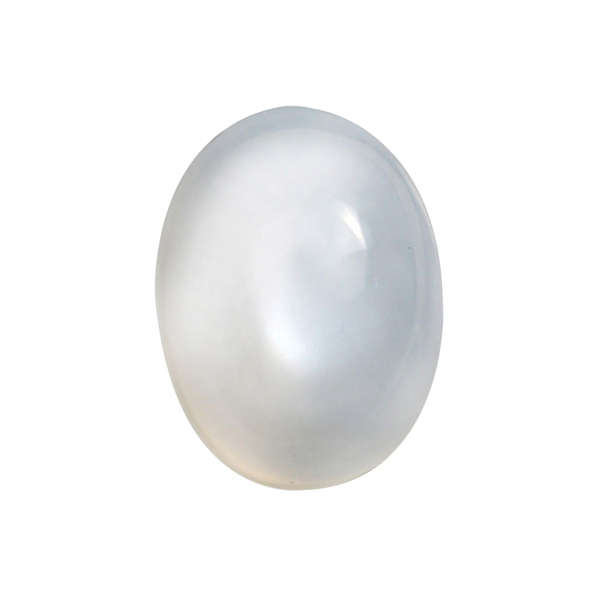Moonstone is a natural stone from the orthoclase feldspar family. This stone is highly prized for its beauty, particularly for its glassy white color and its bluish hues. The phenomenon that gives it its bluish reflections is called adolescence, thanks to the light that is diffracted in the stone.
Today it is very popular and used in the world of jewellery.
Brief history: Moonstone owes its name to its pearly to bluish reflections, reminiscent of the Moon. Its name comes from both the Greek “Selene” and the Latin “Luna”. The scientific name Adulaire refers to the Mont Adula mountain, where one of the largest deposits of moonstone was found in the 19th century. Today, this mountain is exhausted and no longer produces moonstone.
Moonstone has been known since ancient times and was associated with Hecate, the goddess of the moon, which is why it was named Hecatolite.
The Romans used moonstone to enhance clairvoyance and associated it with femininity, while reinforcing the emotions of love to bring greater longevity to couples.
The Indians believed that moonstone was a piece of the moon and therefore, it was considered sacred in India.
Among the Egyptians, moonstone was used as a pendant to protect against attacks and evil spirits during travel. At the end of the 20th century, moonstone was attributed to the Kennedy Space Center as a symbol of Florida, in honor of the first men who set foot on the moon in 1969.
Today, moonstone is highly appreciated for its lithotherapeutic properties (an ancient practice that uses the healing properties of precious stones to promote balance and well-being in our lives).
It is also highly prized in the jewelry world.
- Color: There are different varieties of moonstone, which are differentiated by their impurities.
White moonstone (presence of mica, quartz and other minerals).
Peach-pink moonstone (presence of titanium).
Multicolor moonstone (thin layers of albite feldspar and orthoclase).
Ceylon moonstone (presence of black tourmaline and/or zircon).
Gray moonstone (hornblende, magnetite, biolite and/or ilmenite). - Transparency: Moonstone is usually translucent to opaque and the adularescent luster becomes more pronounced in translucent specimens.
- Hardness: Moonstone is relatively soft compared to other gemstones, with a hardness of 6 to 6.50 on the Mohs scale. This makes it suitable for jewelry, but it may require gentle handling to avoid scratches or chips.
- Origin: Moonstone producing countries are India, Sri Lanka, Madagascar, Tanzania, Australia, Brazil and Myanmar.
- Uses: Moonstone is commonly used in jewelry, especially in oval cabochon cut to show its adulescent shine. It is also used in decorative items, talismans and spiritual jewelry due to its mystical and symbolic meaning.
** Check price according to color, quality and size.








